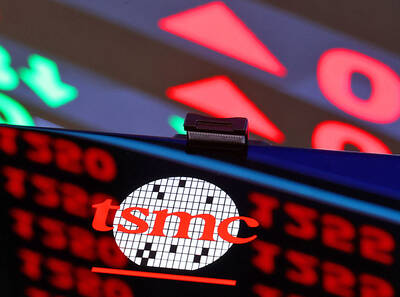The nation’s housing affordability deteriorated in the first quarter of this year, as house prices gained 0.11 percent to 9.72 times of household income and mortgage burdens took out 41.19 percent of income, up 0.94 percentage points from three months earlier, Ministry of the Interior data showed on Wednesday.
The data ran counter to observations by policymakers that the housing market has cooled due to a series of selective credit controls and interest rate hikes.
The house price to income ratio climbed to the second-highest level in history next only to 9.8 times seen in the third quarter of last year, and meant families have to save all they earn for 9.72 consecutive years to own a house.

Photo: Hsu Yi-Ping, Taipei Times
The challenge is much bigger in Taipei, where home prices equal 15.22 times household income, 12.77 times in New Taipei City and 11.34 times in Taichung, the data showed.
At the same time, mortgage burdens constituted 64.5 percent of household income in the capital, 54.13 percent in New Taipei City and 48.08 percent in Taichung.
The government defines mortgage burdens of 30 percent as reasonable, burdens of 30 to 40 percent as relatively high, and burdens of more than 50 percent as excessively high.
By the measure, only houses in Pingtung County, Keelung, and Chaiyi city and county met the “reasonable” test, since mortgage burdens elsewhere fell between 30.96 percent and 64.5 percent, the ministry’s data showed.
Mortgages in Kinmen County were at 35.45 percent and they stood at 34.42 percent in Penghu County, the ministry said.
The mortgage burden was 39.7 percent in Nantou County and 37.68 percent in Hualien County, it said.

SEMICONDUCTOR SERVICES: A company executive said that Taiwanese firms must think about how to participate in global supply chains and lift their competitiveness Taiwan Semiconductor Manufacturing Co (TSMC, 台積電) yesterday said it expects to launch its first multifunctional service center in Pingtung County in the middle of 2027, in a bid to foster a resilient high-tech facility construction ecosystem. TSMC broached the idea of creating a center two or three years ago when it started building new manufacturing capacity in the US and Japan, the company said. The center, dubbed an “ecosystem park,” would assist local manufacturing facility construction partners to upgrade their capabilities and secure more deals from other global chipmakers such as Intel Corp, Micron Technology Inc and Infineon Technologies AG, TSMC said. It

EXPORT GROWTH: The AI boom has shortened chip cycles to just one year, putting pressure on chipmakers to accelerate development and expand packaging capacity Developing a localized supply chain for advanced packaging equipment is critical for keeping pace with customers’ increasingly shrinking time-to-market cycles for new artificial intelligence (AI) chips, Taiwan Semiconductor Manufacturing Co (TSMC, 台積電) said yesterday. Spurred on by the AI revolution, customers are accelerating product upgrades to nearly every year, compared with the two to three-year development cadence in the past, TSMC vice president of advanced packaging technology and service Jun He (何軍) said at a 3D IC Global Summit organized by SEMI in Taipei. These shortened cycles put heavy pressure on chipmakers, as the entire process — from chip design to mass

Germany is to establish its first-ever national pavilion at Semicon Taiwan, which starts tomorrow in Taipei, as the country looks to raise its profile and deepen semiconductor ties with Taiwan as global chip demand accelerates. Martin Mayer, a semiconductor investment expert at Germany Trade & Invest (GTAI), Germany’s international economic promotion agency, said before leaving for Taiwan that the nation is a crucial partner in developing Germany’s semiconductor ecosystem. Germany’s debut at the international semiconductor exhibition in Taipei aims to “show presence” and signal its commitment to semiconductors, while building trust with Taiwanese companies, government and industry associations, he said. “The best outcome

People walk past advertising for a Syensqo chip at the Semicon Taiwan exhibition in Taipei yesterday.